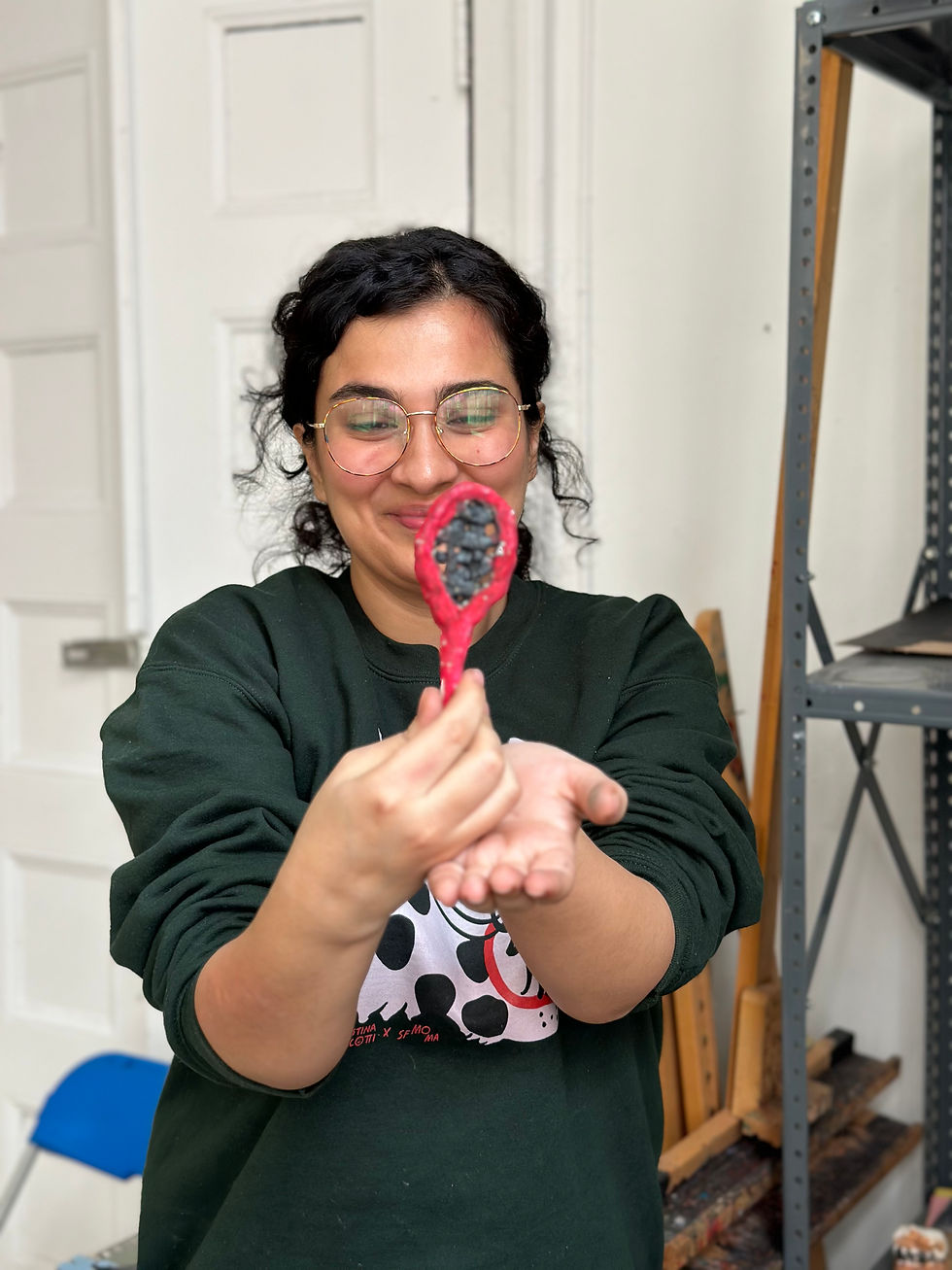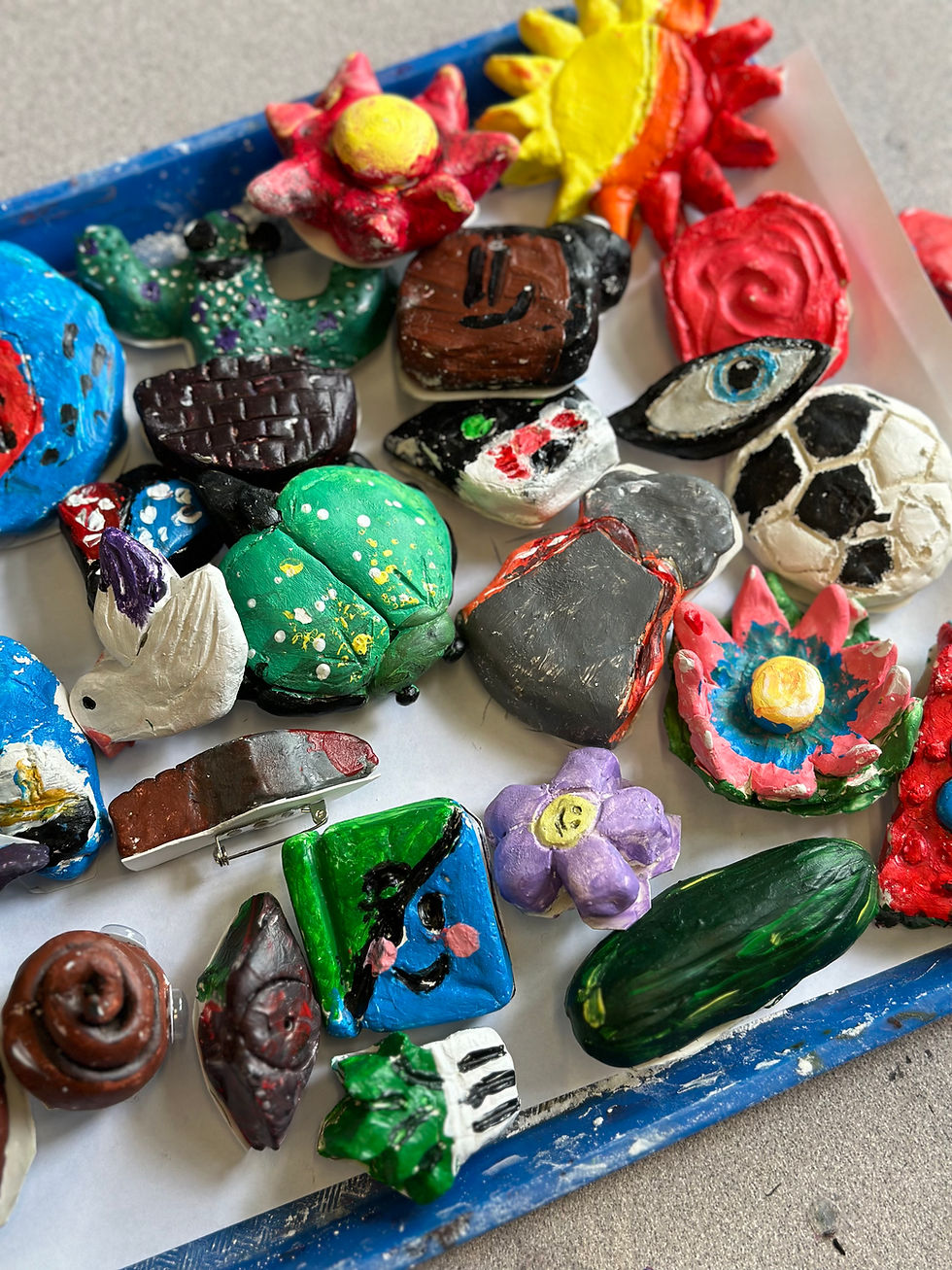
29/5/24
Classroom Visits
In the Classroom with Noormah Jamal
CMA Resident Artist Noormah Jamal discusses building trust with her students, finding the perfect assignment, and the art lesson that blew her away.
Click to expand media gallery.
As part of CMA's Residency for Experimental Arts Education, Noormah Jamal teaches art to fifth graders twice weekly at Children's Workshop School, a progressive public elementary school in NYC's East Village. Below, visit Noormah in her classroom and get a glimpse at her students' artworks.

On Happy Accidents in the Classroom.
When kids make artwork, they’re not scared. They don’t hesitate; they jump right in. That really inspires me. Sometimes it’s a good thing when kids don’t entirely listen to my instructions – the accidents or deviations that happen along the way make the final work all the more interesting. Children learn a lot when they experiment. That pushes me in my own artmaking, as well.
Every now and again, kids will struggle with certain assignments, but the perfect assignment always comes along. They will completely surpass my expectations. As an educator, that’s the most exciting thing that can happen in a classroom.

On Earning Trust Among Students.
When working with young children, you really need to earn their trust. Time is the most important thing to have with them. The more you get to know them, the more you can engage their individual interests.
I have a student in one of my classes who has behavioral issues. In the beginning, he wouldn’t engage at all. Recently, I overheard him talking about Naruto. I loved Naruto growing up, so I know all the characters. Once I started talking about those characters, and he was like, “Wait, you know this world?” When we started the zine assignment, I encouraged him to imagine a Naruto character interacting with another student’s Addams Family character, and merge those worlds together. That was only possible because I was with him long enough to know the universe he was interested in, and that’s what got him to engage.
Because I've worked with my students for so long, I know how to “get” to them. When I introduce an assignment, I already know who's going to engage and who is not going to be as interested in the lesson. For those students, I’ll edit the lesson as I go. I’m only able to do that because I know them so well.

On Watercolors.
The wet on wet watercolor lesson was my absolute favorite. I was shocked by the quality of work that students were producing. We practiced painting in previous lessons, and many were struggling to hold the brush and maintain consistent amounts of water. I demonstrated the wet on wet technique once, turned around to arrange some art materials, and by the time I turned back around, they had completely mastered it. I was floored by their level of control and observation of color. Some were even color mixing directly on the palette.

On Her Students Becoming Artists.
Sometimes students will rework my assignments into something even better. During the animal cloud lesson, one student sandwiched extra pillow fluff between two foam sheets to create her own stuffed animal character. That inspired seven other students to create their own pillow characters as well. It’s amazing to see them being inspired by each other!
I have a handful of students that I seriously hope will become artists. It would be a real shame if they didn’t. For the others, it’s just about practice and sticking with it but they clearly have other interests or life goals. They’re at a tricky age where they’re deciding whether they’re good at something or not.
That's why I enjoy having different art practitioners visit the classroom. It’s helpful for the kids to see that they don’t have to necessarily be a painter or a sculptor to be an artist. With the zine assignment, I told my students about comics, animations, mood boards, frame-by-frame drawing … There are many different paths in artmaking, yet these fields are interconnected. There are many, many ways to be an artist.

On Her Fellow Educators.
The other teachers at Children’s Workshop School are so creative. They're used to not having an arts program, so they incorporate art in their everyday lessons. For example, the postage stamp assignment came from a lesson in their social studies class.
Each student has a board outside their classroom, and sometimes I’ll notice assignments or techniques from our art class on the boards. After we did the one-point perspective assignment, I saw my students’ drawings on their boards for weeks afterwards. When we studied gradients and color repetition, I knew which students completed which drawings without looking at the names. I get really excited when I can recognize how a students’ hand moves. Somedays I get to school early and spend time looking at the boards.



















































